DNA modification in genetically aspect
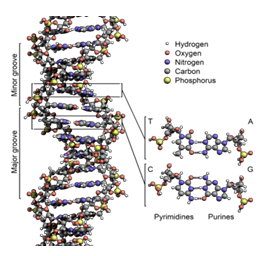
Deoxyribonucleic acid (DNA) is a molecule that includes the genetic instructions worn in the development and functioning of all known living organisms and many viruses. DNA is a nucleic acid alongside proteins and carbohydrates, nucleic acids compose the three major molecular essential for the human being to survive in their lives. Most DNA molecules are double-stranded helices, consisting of two long biopolymers prepared of simpler units called nucleotides.
Each nucleotide is poised of a nucleobase (guanine,adenine, thymine, and cytosine), which uses the letters G, A, T, and C, as well as a backbone use in making of alternate sugars(deoxyribose) and phosphate groups (related to phosphoric acid), with the nucleobases (G, A, T, C) attached to the sugars.
Biological information is replicated as the two strands are separated. A significant portion of DNA (more than 98% for humans) is non-coding, meaning that these sections do not serve a function of encoding proteins.
History of DNA
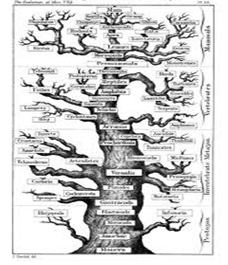
Fig: Geo logical tree of humanity
DNA was firstly unreachable by the Swiss physician Friedrich Miescher who, in 1869, who uncovered a microscopic substance in the pus of discarded surgical bandages. As it inhabited in the nuclei of cells, so he called it "nuclein" In 1878, Albrecht Kossel secluded the non-protein component of "nuclein", nucleic acid, and after that isolated its five primary nucleobases. In 1919, Phoebus Levene recognized the base, sugar and phosphate nucleotide unit.Levene recommended that DNA consisted of a string of nucleotide units linked together through the phosphate groups. However, Levene considered the chain was short and the bases repeated in a fixed order. In 1937 William Astbury shaped up the first X-ray diffraction patterns that showed that DNA had a regular structure.
DNA MODIFICATION
The grounding of DNA for molecular applications frequently requires sample processing beyond constraint enzyme digestion, fragmentation or PCR amplification. Modifying enzymes can be used to maneuver or repair DNA for downstream applications, such as:
- Recombinant DNA assembly for subsequent cloning
- PCR amplification
- DNA labeling or probing
- Sequencing
Chemical modification of DNA or packaging
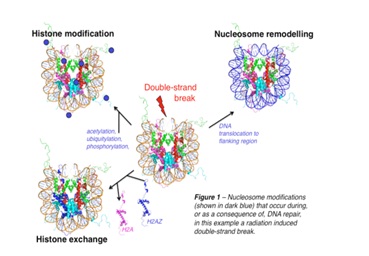
The expression of genes is prejudiced by how the DNA is packaged in chromosomes, in a structure called chromatin. Base modifications are to be occupied in packaging, with regions that have low or no gene expression frequently containing high levels of methylation of cytosine bases. DNA packaging and its influence on gene expression can also arise by covalent modifications of the histone protein core around which DNA is covered in the chromatin structure or else by remodeling carried out by chromatin remodeling complexes (see Chromatin remodeling). There is, further, crosstalk between DNA methylation and histone modification, so they can coordinately concern chromatin and gene expression.
Damage
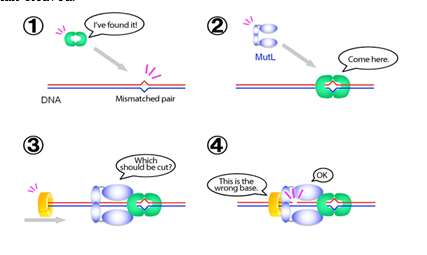
DNA can be injured by many sorts of mutagens, which may make changes in the DNA sequence. Mutagens comprise oxidizing agents, alkylating agents and also high-energy electromagnetic radiation like ultraviolet light and X-rays. The type of DNA damage formed depends on the type of mutagen. For example, UV light causes in damage of DNA by producing thymine dimers, which are inter related between pyrimidine bases.
Focusing area of DNA Modification
DNA Nicking Normally, restriction endnucleases bind to their recognition sequences in DNA and hydrolyze both strands of the duplex at the same time. Two independent hydrolytic reactions advancement in parallel, most often determined by the presence of two catalytic sites within each enzyme, one for hydrolyzing each strand. Techniques have been urbanized to modify the action of restriction enzymes to hydrolyze only one strand of the duplex, to fabricate DNA molecules that are “nicked”, rather than cleaved.
DNA END TREATING: Producing DNA samples by shearing, nebulization, restriction enzyme digestion or PCR amplification habitually leaves DNA molecules with ends irreconcilable for downstream experiments. Selective enzymatic treatment is worn to prepare DNA for ligation.
- DNA Blunting
- DNA phosphorylation / Dephosphorylation
DNA REPAIR: DNA is vulnerable to squalor from a number of sources, including oxidation, UV radiation, ionizing radiation, phenol/chloroform extraction, mechanical shearing, formalin fixation (post extraction), or long term storage. DNA renovate proteins and processes can facilitate the diagnostic analysis of environmental samples.
DNA & PROTIEN METHYLATION :
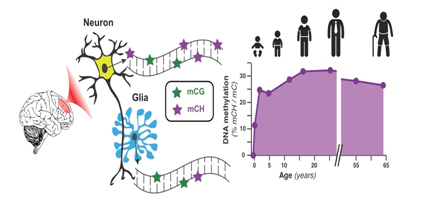
Methylation situate for a chemical modification to the DNA on cytosine bases and histones.That manipulates the way the molecule is shaped and, consequently binds various regulatory proteins that resolves the transcriptional status of the gene. Generally a methyl group is emotionally involved on the 5th-carbon of cytosine (5mC) adjacent to a guanine (CpG dinucleotides) that is correlated with transcriptional gene repression in vertebrates.
DNA LIGATION:

Ligation of DNA is a middle step in many modern molecular biology workflows. DNA ligases catalyze the configuration of a phosphodiester bond linking the 3' hydroxyl and 5' phosphate of adjacent DNA residues.
The secrete of life
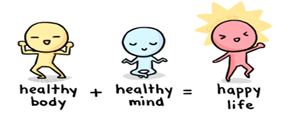
“Once you learn that, you’ll never stay the same again.”
“ When you raise up you, lean to get told that the world is the way it is and your life is just to live your life inside the world, try not to punch into the walls too much, try to get a nice family, b happy secure a little money. That’s a very petite life. Life can be much broader, once you determine one simple fact, and that is that everything which is surrounded you that you call life was made up by people that were no smarter than you. And you can revolutionize it, you can influence it, you can build your own things that other people can use. Once you learn that, you’ll never remain the same again.”